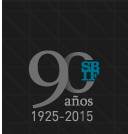





Español | English
This information comes from Chile Travel, the official travel guide to Chile. You can follow @chiletravel_es at Twitter.
Chile is a long, narrow country that extends from the Andes Mountains to the Pacific Ocean on the southwest side of South America, from latitude 17° 30' S in the Altiplano to 56° 30' S at the far end of continental Chile and 90° S in its Antarctic territory.
Santiago is the country's capital and largest city in terms of population and employment, with 6,061,185 inhabitants as of the 2002 census. Located on parallel 33° S, at roughly the same latitude as Buenos Aires and Montevideo, Santiago is the country's main political, economic, cultural and industrial center. It is the gateway to Chile and one of the most modern capital cities on the continent.
In this video you can watch what tourists say about Santiago:
Getting there by Plane: flights from North and South American and European cities land daily at Arturo Merino Benítez Airport (SCL). For more information, see www.aeropuertosantiago.cl.
Weather: Chile's Central region has a Mediterranean climate. In this part of the country, the climatic conditions are more moderate. The cold season goes from May to September and the hot season lasting from October to April. The average temperature in summer time is 20ºC (68ºF), with highs above 32ºC (89ºF). You can see current forecast at Accuweather.com
Language: The official language of Chile is Spanish. However, there is an idiomatic tendency to "Chileanize" the language, creating new words and usages.
Visas and Documents: To enter Chile, all passangers have to show their identification documents (identity card or passport) and the stamped visa (depending on country of origin). Citizens of South America, the European Union, the United States, Canada and Australia do not require a visa. Although, some passangers have to pay a reciprocity tax (in cash) when they arrive to the airport in Chile.
Electricity and Communications: The electrical current in Chile is 220 Volts and 50 Hertz. Three-terminal electrical adapters are not common, but two-terminal converters can be found at stores that sell electrical equipment. You can find broadband Internet almost anywhere in the country, and WiFi service is available in the main cities.
Currency, Costs and Tips: The currency is Chile is the peso, with coins of one, five, 10, 50, 100 and 500 pesos and bills of 1,000, 2,000, 50,000, 10,000 and 20,000 pesos. The exchange rate for the U.S. dollar is roughly 700 pesos, while that of the Euro is approximately 780 pesos.